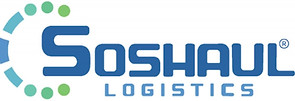What Is A Fuel Surcharge Program? How Do I Calculate Fuel Surcharge?
- Dr. Sean Goffnett, Eric Carter, Samantha Allen
- Nov 11, 2022
- 6 min read
Updated: Oct 30, 2023
As diesel prices continue to ebb and flow, fuel surcharges serve as a vital means of balancing the scales and ensuring the smooth movement of freight across the nation. But what exactly are fuel surcharges and how are they calculated? Let's talk about it!
What is a Fuel Surcharge Program (FSC)?
Fuel surcharges are fees that primarily cover fluctuations in the cost of the diesel fuel a driver uses to haul a load. These fees are billed to shippers in addition to the rate for hauling the freight. When fuel topped $1.20 in August of 1999, fuel surcharge became a common practice and the per gallon diesel prices crept high enough to justify the additional charge to shippers. Trucking companies benefit from fuel surcharge programs because they can compensate their drivers for fuel expenses. Diesel fuel prices frequently fluctuate, rising in one area or falling in another, and reimbursing drivers is important to continue the movement of freight.

Shown in the image below are the weekly average retail diesel prices in the Midwest region (PADD 2) throughout the span of three weeks. Most standard fuel programs will reference this price table to determine the weekly fuel surcharge rate according to their fuel surcharge matrix or schedule (we will discuss more about this shortly). The fluctuating prices of fuel can make it difficult for carriers managing fuel costs.

Calculating fuel surcharge can be done in various ways and helps shippers and carriers ensure their budgets align with their capabilities.
There are 4 common ways to manage fuel surcharge:
Using a standard rate per mile (RPM) fuel schedule
Calculating fuel surcharge as a percentage of the linehaul rate
Using a 3rd party fuel consumption management firm
No separate fuel surcharges
Standard Rate Per Mile (RPM) Fuel Schedule
A fuel surcharge schedule is a list of preset prices indicating what a shipper will pay per mile, sometimes calculated as a percentage of the linehaul rate, for the fuel used to transport their products. Using a standard fuel schedule is the most common way shippers manage their fuel surcharges. Under this method, the cost of purchasing fuel, based on the DOE national rate, is passed onto the shipper. Shippers have a spreadsheet or database that can be easily shared with drivers that indicates their fuel surcharge schedule. This method is easy for shippers to handle and requires their list of per-mile fuel payments to be updated on a scheduled basis (weekly, biweekly, or monthly). FSC is typically paid at the same time as the linehaul rate to the carrier after the carrier submits their invoice. Look at the following FSC Matrix for a quick example.

Using this matrix is simply done by accessing the Energy Information Association (EIA) website (shown earlier) to note the weekly diesel retail price of the region (assigned by the shipper/customer) and identifying which bracket that price is in on the schedule/matrix. For instance, the EIA indicates that fuel prices in the Midwest are $5.351 for the week starting 11/7/2022, which would mean this shipper/customer is willing to pay $.64 per mile for fuel (see highlighted RPM below). Let’s say that the total trip from pickup to delivery is 700 miles. Therefore, the total fuel compensation for this load paid by the shipper/customer is 700 miles x $.64 = $448. Again, this will be invoiced as a separate line item typically below the linehaul rate on the invoice.

A standard fuel schedule is not the solution for every business. Under different circumstances, shippers may pay prices that don’t reflect the costs of fuel incurred by the driver hauling their freight. This method is a generalization of fuel prices and can lack accuracy which may leave shippers overpaying or underpaying for the fuel.
Percentage of Linehaul Rate
Another method of managing fuel surcharges is to calculate fuel costs as a percentage of the final linehaul base rate. Utilizing this method gives shippers an advantage to be competitively priced on long hauls. Let’s look at an example:
A carrier quotes a 400-mile shipment at a rate of $4 per mile.
This shipment would bring in a linehaul price of $1600 (excluding fuel).
The EIA average fuel price for diesel in the Midwest is $5.327 for the week of 10/31/2022.
Paying for fuel as a percentage of the linehaul is scheduled to be 43.5% of the final linehaul according to the FSC matrix below.
Calculated as $1600 x 43.5% = $696 in fuel, the shipper/customer would thus pay a total of $1600 + $696 = $2296


Alternatively, percentage-based pricing on shorter runs (350 miles or less) doesn’t require the same fuel usage would leave the shipper paying more than necessary in fuel. Some carriers will purposely price their linehaul rates higher than they typically would to receive higher fuel compensation.
Third Party Fuel Consumption Management
Another option, and probably the rarest method for managing fuel surcharges is to use a 3rd party system for fuel management. This method helps shippers who strive to pay the most accurate fuel surcharge price. Standard and percentage scheduling using the Department of Energy’s index provides shippers with blanket fuel pricing for regions or lanes. Using fuel recovery and management technology through third parties allows shippers to focus in on daily fuel prices in the areas they run freight. This information allows companies to ensure the fuel prices are accurate. This option tends to work best for larger shippers with high volumes of freight moving each month.
Check out Fuel Force or Samsara for examples of 3rd party fuel management companies.
No Separate Fuel Surcharge
Through this method, shippers include fuel costs with the linehaul rate and do not separate fuel costs as a separate expense. This comprehensive number which includes the linehaul and fuel costs is often referred to as the ‘all-in’ linehaul rate. Not separating the fuel costs from the linehaul saves companies time and is effective for one-time, or short-term situations such as spot opportunities. When considering long-term commitments, carriers are often deterred by this option of compensation. This is because fluctuating prices of fuel can lead to carriers taking a loss while in contractual commitments.
How Do I Calculate Fuel Surcharge?
Let’s walk through an example of the standard rate per mile, percentage of linehaul, and all-in rates for fuel. A carrier agrees to haul a load from Detroit, MI to Kansas City, MO which is approximately 764 miles. The shipper/customer is based in Detroit, MI and asks all carriers to use the Midwest (PADD2) if they implement a fuel surcharge program. Let’s use the same EIA Diesel Price snapshot from earlier as well as the same fuel matrix for RPM and % of linehaul that we used earlier. The shipment will use the EIA Diesel price from 10/31/2022 which was $5.327 for the Midwest (PADD2).
If the customer used a standard RPM FSC Program the carrier would calculate their total compensation like this:

Linehaul Rate: $2000
FSC: 764 miles x $.64 FSC RPM = $488.96
Total Due = $2000 + $488.96 = $2488.96
If the customer used a % of linehaul FSC Program the carrier would calculate their total compensation like this:

Linehaul Rate: $2000
FSC: $2000 x 43.5% = $870
Total Due = $2000 + $870 = $2870
If the customer does NOT use a FSC program the carrier would calculate their total compensation like this:
All-in Rate: $2700
Total Due = $2700
A carrier will arrive at their linehaul rate and all-in rate based on their own operational costs, current market trends, freight difficulty, equipment required, and geographic region of pickup and delivery.
Fuel Surcharge Programs serve as a crucial mechanism to manage the ever-changing fuel expenses faced by carriers. As diesel prices continue to fluctuate, these surcharges provide a way to ensure fair compensation for drivers and maintain the smooth movement of freight.
If you or someone you know would like to learn more, share this blog with them! We cover a variety of topics related to starting, operating, and growing a trucking business as well as free resources, digital products, and comprehensive courses.
Ready to START, DRIVE, & ACCELERATE your trucking business? Check out our course here!

Interested in being notified when more free resources are available? Subscribe down below and you'll be the first to know!
Soshaul Logistics LLC and its affiliates do not provide tax, legal or accounting advice. This material has been prepared for informational purposes only, and is not intended to provide, and should not be relied on for, tax, legal or accounting advice. It is meant to serve as a guide and information only and Soshaul Logistics, LLC - Copyright 2023 - does not assume responsibility for any omissions, errors, or ambiguity contained herein. You should consult your own tax, legal and accounting advisors before engaging in any transaction or operation.




Comments